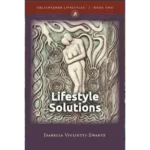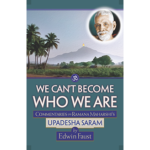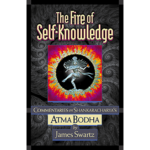Matt: You say: “We’re never not experiencing the Self, because there’s nothing else to experience. All that’s necessary is the removal of ignorance about that fact.” Is the removal of ignorance just me reading that we’re never not experiencing the Self and accepting it or does it involve this fact seeping more deeply into my consciousness over time somehow?
Rory: The scriptures have two words to describe the assimilation of knowledge: jnana and vijnana. The teaching delivers jnana, knowledge, which must then be converted to vijnana, which in this context means assimilated knowledge, or conviction. This takes time. Vedanta is basically saying: “You are not the mind-body-ego, you are the awareness in which they appear.” That’s pretty simple really, and when you’re taken through the logic step by step, it’s easy to accept.
However, ignorance is hardwired, so as you go about your day, you’ll almost certainly find your mind defaulting back to identification with body-mind-ego and all the various thoughts, beliefs and conditioning. That’s why the third stage of Vedanta, nididhyasana, involves continued and continual reflection on the knowledge “I am awareness/the Self.” It takes time and the steady application of Self-inquiry in order to convert this knowledge into hard and fast conviction.
Matt: You said, “So perhaps what you mean when you say ‘knowledge’ is assimilated, fully integrated knowledge, which renders the vasanas non-binding and delivers those delicious fruits of moksa.” I’m interested in what you have described here as fully integrated knowledge. Is this when the mind “gets it” as you mentioned previously?
Rory: It’s an important topic. I’ve just published a new commentary on the Bhagavad Gita. You might find it helpful, as it covers this topic and many others in considerable detail. Here’s an excerpt which I think summarises the importance of nididhyasana, integrating the knowledge. (I love this story, which comes from Swami Chinmayananda ☺.)
The Man Who Thought He Was a Worm
Did you ever hear about the man that thought he was a worm? This otherwise ordinary fellow went through life believing himself to be inferior to everyone else. The idea that he was a wriggling worm not only caused terrible self-esteem problems, but also gave him an overwhelming fear of birds. Birds, after all, eat worms. Whenever he stepped outside, the mere hint of a bird twittering was enough to strike mortal dread into his heart.
One day, a concerned friend decided that enough was enough. He told the man that he couldn’t go on like this, and that he had to get help. His friend made some phone calls, pulled a few strings and got the man booked into a renowned mental health institution.
There, the man received excellent care. Every day he met with a skilled psychologist who eventually managed to convince him that he wasn’t a worm – but was, in fact, a human being like everybody else.
It took some time for the man to accept this. After all, he’d spent a lifetime labouring under his delusion. But as the truth began to sink in, he found himself overcome by a tremendous sense of relief and liberation. If he really was a human being like everyone else, then he had nothing to worry about and he could actually enjoy his life!
The last morning of his stay, he thanked his doctor profusely, a tear of gratitude in his eyes. He then discharged himself and stepped outside, ready to take on the world – until, that was, he caught sight of a bird sitting in a nearby tree – a big black crow, silently eyeing him.
Overcome by panic, he dashed back into the hospital and raced all the way to his psychologists’s office. He shouted as he banged at the door, his heart racing and his skin covered in a cold sweat. The doctor came out, astonished. “Whatever is the matter?”
“There’s a bird out there!” the man cried, his entire body trembling. “It… it was looking at me!”
The doctor frowned. “But we’ve been through this again and again. You don’t have to worry about birds now. You’re not a worm – you’re a human!”
“You know that,” the man said, “and I know that – but the bird doesn’t know that!”
The moral of the story is simple. When you’ve spent a lifetime thinking of yourself a certain way, it’s going to take time and effort to shift out of that way of thinking. Habitual patterns of thought rarely change overnight. Even once you’ve seen an illusion for what it is, the aftereffects of fear and suffering may remain for some time.
Here’s another analogy. Imagine a beggar finds a lottery ticket in the trash and, to his astonishment, learns that he has the winning numbers. He may have been living on the streets for years, but he suddenly has enough money to afford a big house, a fancy car and every luxury he could dare to dream of.
Although his outer circumstances have changed, it may still take him some time to overcome his old ways of thinking. Inwardly, he may still see himself as a beggar, as someone who has to worry about where the next meal is coming from.
To overcome this sense of limitation, he must own his new status by meditating on himself as a rich man and not a beggar.
The same is true when it comes to Self-knowledge. Unless your mind is highly qualified prior to the first stage of teaching, you won’t immediately enjoy the full benefits of Self-knowledge. In all likelihood, you’ll still have certain blocks and obstructions preventing you from enjoying your nature as limitless, ever-free awareness. Owing to your past thinking, you may still feel beggarly when, in fact, Self-Knowledge reveals you to be the king of all kings or queen of all queens.
How to Practise Nididhyasana
For this reason, nididhyasana is a vital step that cannot be skipped. While the first two stages of teaching may last a certain duration, either months or years depending on the student, the final stage, assimilating and integrating the teaching, has no set timespan. In fact, nididhyasana should be practised for the rest of your life. This prevents old habitual thought patterns from reasserting themselves and obscuring the knowledge that you are sat-chit-ananda: existence, consciousness and bliss.
A key aspect of nididhyasana involves learning to evaluate your life in the light of Self-knowledge. Your old habits, thought patterns, values, relationships, activities and ways of relating to others and the world must be re-evaluated in the light of Truth. Anything that no longer serves you or which is incongruous with your identity as the Self – including adharmic habits that cause unnecessary agitation to your mind, body or senses – should be weeded out.
The way that you live should be as close a reflection of who you truly are as possible. When you realise your identity as the Self, you may notice that a lot of what was previously important to you – prior ambitions, goals and the compulsive need to attain and acquire – simply falls away of its own accord. Why would you continue seeking fullness in the world when you have finally found fullness in yourself? An enlightened person feels happy in himself or herself, and not because of external factors, but rather in spite of them.
The second component of nididhyasana is practising Vedantic meditation, which is the subject of this chapter. Swami Paramarthananda calls this “self-opinion revision meditation.”
You came to Vedanta feeling like a lowly jiva subject to the compulsions and sufferings of samsara. Vedanta reveals this to be but a superimposition: an erroneous assumption caused by maya, which masks your true identity as the Self. Over time, you experience a shift of identity. Whereas before you identified with the body-mind-ego, now you know yourself to be pure awareness, eternal and ever free from the limitations of name and form.
As we’ve established, however, it will likely take time until this reorientation of your identity becomes as natural to you as rattling off your name when someone asks who you are. Until it does, you must consciously apply Self-inquiry to any self-limiting thought, negative self-opinion or misplaced identification as and when it arises in the mind.
Whenever you find yourself identifying as a jiva, as a wanting, grasping ego, you must get to the root of that ignorance and substitute it with a thought of truth: a thought of the Self.
Vedantic meditation focuses your attention on the object of meditation – your own Self. You fix your mind on the teaching over and over again until Self-knowledge becomes firm conviction. Continued and sustained reflection on your identity as the Self, as the awareness in which all objects and experiences arise, gradually shifts your identity from the finite jiva to the infinite Self.
I think this also answers the other question you sent regarding intellectual knowledge not being enough. I don’t have time to watch the video you sent, but here’s what I think he means: intellectual knowledge must be converted to hard and fast conviction. Until the knowledge is fully integrated, as I said, the mind will continue identifying with all its old patterns of ignorance. Hence we get people who think they’re enlightened, and they maybe do intellectually understand that they’re the Self, but they’re still chasing after fame, money, sex, drugs and rock ’n’ roll.
When the knowledge is properly assimilated by the mind, the result is perfect self-satisfaction. You lose the compulsion to seek happiness in the world (which is the very root of samsara) because you finally know the bliss of complete satisfaction as you are. A lot of people are too lazy and experience-hungry to put in the work needed to really internalise the knowledge, and it is hard graft. As a result, the knowledge is only ever partially assimilated and this leads to conflict – because on one hand they believe they’re already whole and complete, but on the other they’re still being led around by their vasanas because they simultaneously feel incomplete. So most definitely, jnana (knowledge) must be converted to vijnana(conviction), otherwise the teaching simply won’t translate to moksa.
I hope that helps clarify things.
Matt: Fantastic, Rory, thank you again for taking the time to help me. I really appreciate it! Does assimilated knowledge mean that the knowledge is understood and there is conviction?
Rory: You’re welcome, Matt, I’m glad I could help. Yup, that’s basically what assimilated knowledge means. It means you’ve taken it and internalised it, allowing it to overwrite the mind’s many pockets of ignorance. The Gita uses the term stithaprajna, which basically means “someone for whom the knowledge sticks.”











